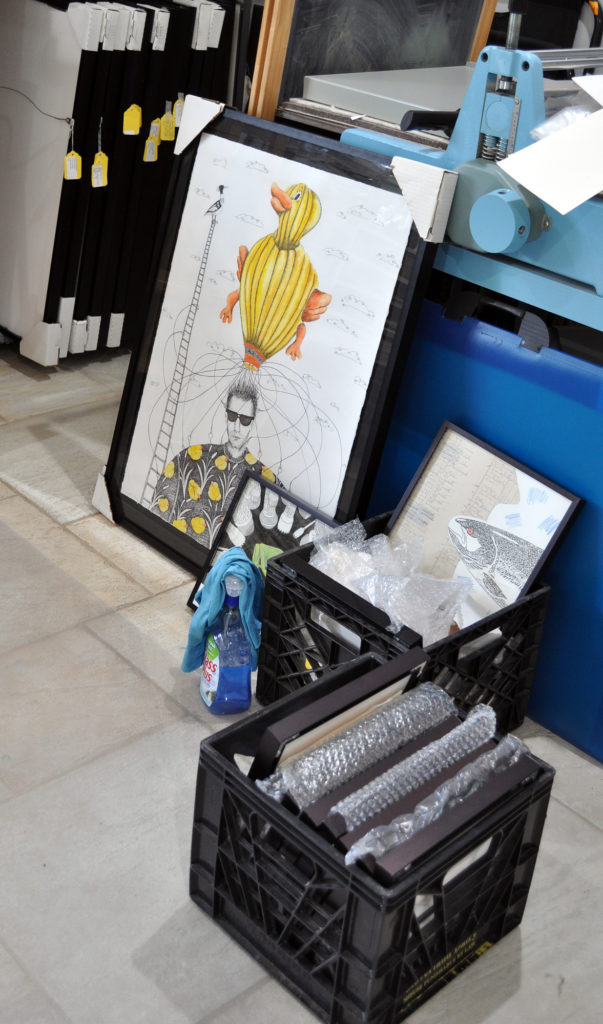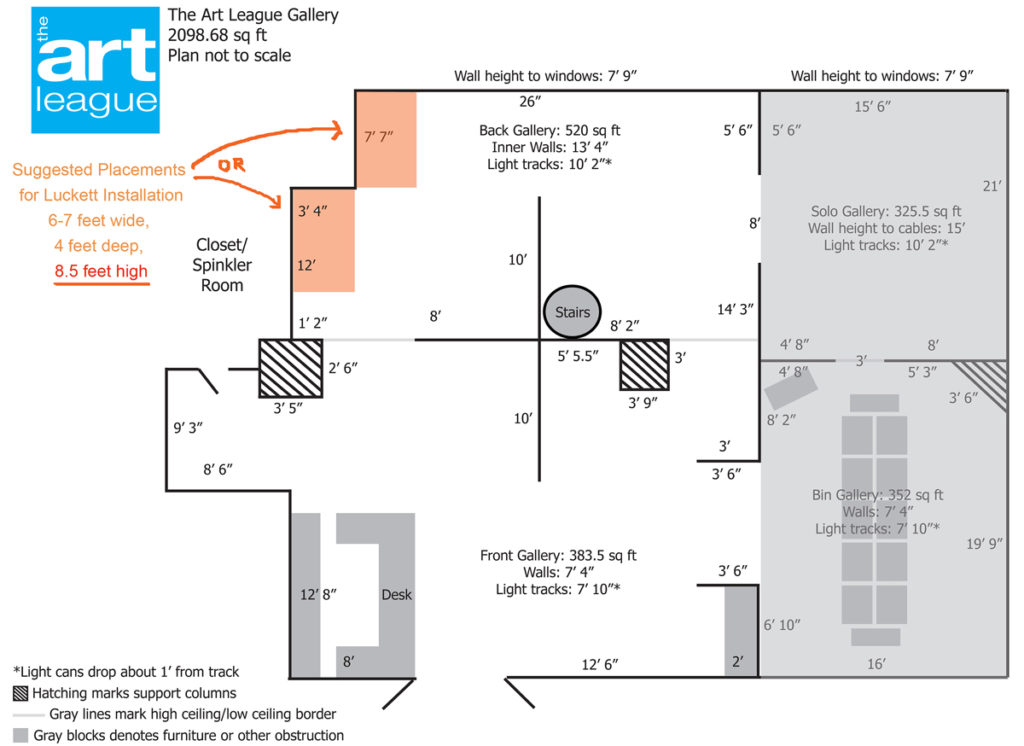The Art of Assembling and Disassembling

Cleaning glass and organizing pieces before an exhibit
I’m often asked, “How long does it take to make this painting (or collage or drawing)?” The answer is complicated, because each piece may take merely days or weeks. But sometimes years are spent putting together a single piece of art or a series of related pieces. And, even though a composition may come together quickly, it probably took years of study, practice and immersion in the studio before the solution to such an art piece finally filters through my brain onto the paper complete and pleasing to the eye. Finding inspiration, remembering the idea, sketching or photographing it, and mulling it over are required before a composition is arrived at.
But wait–There’s more to be done: photographing the final design so I have a digital copy. Then framing. What a process that is! Acquiring a mat, plexi or glass, plus a backing board AND getting all that squeezed into the frame takes a lot of fortitude–and unlimited frustration for me. I am not adept at cutting straight or measuring 3/16 inch components, so I’m more than willing to let the framer lay it all out on huge tables to measure and cut, to get the job done perfectly.
Another almost-final step in my art process is to get work into a gallery or other venue so that the public can see, relate to it, and like it enough to take it home. This also is a time consuming task. PR statements must be written, show labels printed out, invitations ordered and a dozen other tasks must be done. Once the calendar rolls around for installation day, more assembling is required. That is, unless the gallery owner or staff installs your work for you. Allow a day for install either way. I usually do a paper layout of the show which takes quite a bit of anxiety out of the process on what will be a strenuous install day. Better yet, try to get a floorplan from the gallery. Don’t forget to bring tools: screwdriver, hammer, display hooks, eraser, pencil, masking tape, a level, etc. A gallery with a hanging system in place can save a lot of time and keeps the walls clear of nail holes. Be prepared for the framed pieces to swing around a lot before settling in to a level position. Tape under one of the corners helps keep them straight. Placing labels and greeting people at the opening is easy compared to everything else, except……except for disassembling the exhibit three or four weeks later.
By far the easiest part of this whole art process is taking down frames off the wall. But the pace picks up while schlepping everything to the van. Again! How did we fit everything all in on the way down? How did we keep pictures from sliding around during the inevitable hard brake for a stoplight? Add more time for hauling work into studio storage. If the install/take-down all sounds too demanding, one can hire an installer to do it for you, door to door. But if you are on a tight budget, spend some time now on the treadmill and build up your upper body muscles with those weights that are somewhere in the closet!


